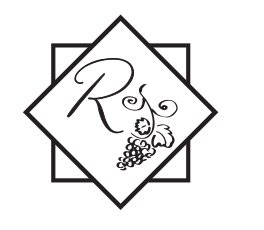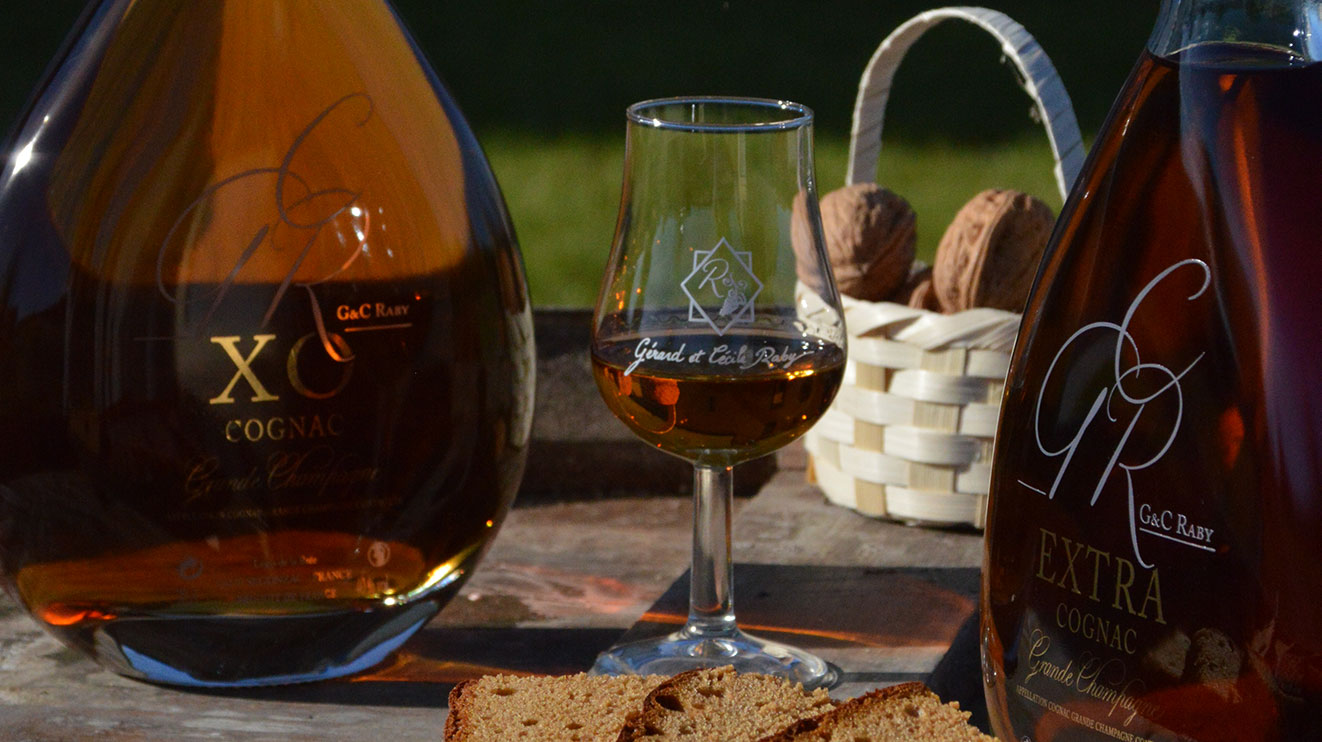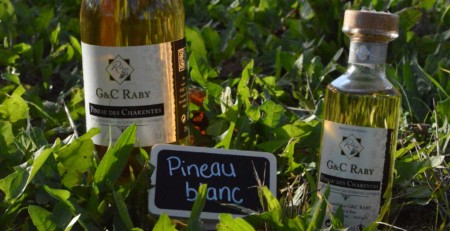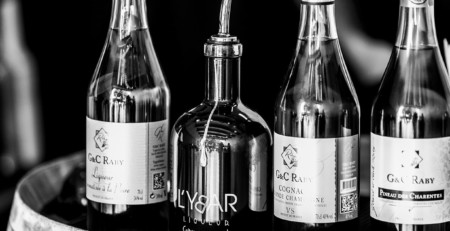XO cognac – What is it?
Cognac?
In 1936, cognac became an AOC (Appellation d’Origine Contrôlée). This AOC guarantees the quality and authenticity of this exceptional spirit. To be called Cognac, this blend of eaux de vie obtained by distilling white wine must meet very precise specifications, from production to marketing. The distillation must be double and carried out in a copper Charentais still. Once this distillation is complete, the eau de vie obtained must be aged in oak barrels for at least two years.
Cognac: a history
The history of cognac and the history of distillation are closely linked. Distillation is a process invented in the 15th century by the Dutch, to preserve the quality of wine during transport. It was only in the 18th century that double distillation was introduced and consequently, as you will have understood, that Cognac was born! From that moment on, Cognac became an internationally recognised trading town. The years passed and the cognac market grew. The people of Cognac made a decision. They no longer sent the cognac in barrels but in bottles. But the 1870s were to be a turning point for the people of Charente. Phylloxera spread very quickly through the Cognac vineyards and decimated many hectares of vines. The 20th century marked a great advance for Cognac. Indeed, it was decided to delimit the geographical area of production of this alcohol. Moreover, as we have seen previously, it is at this period that cognac becomes an AOC. Today, more than 95% of cognac is shipped to 160 countries.
Cognac: an appellation area
Cognac must be produced in a specific region in France. This region is divided into six crus which are Grande Champagne, Petite Champagne, Borderies, Fins Bois, Bons Bois and Bois ordinaires. The Cognac vineyards extend over the Charente, Charente-Maritime and some communes in the Dordogne and Deux-Sèvres. The Charente terroir offers our eaux de vie a proximity to the ocean and a temperate oceanic climate.
Grande Champagne and Petite Champagne are in the heart of the Cognac region. These two crus have clay-limestone soils and offer fine, floral-dominated eaux de vie. Grande Champagne, with the small town of Segonzac at its heart, is known for producing the most renowned and finest eaux de vie. The fact that a cognac is made from grapes from Grande Champagne has become a selling point. The eaux de vie from Grande Champagne have superior ageing capacities to other eaux de vie.
Borderies is in the northwest of Grande Champagne. This cru is the smallest of the six crus. It has siliceous-clay soils and offers round eaux de vie.
Les Fins Bois is the largest cru with superficial clay-limestone soils and very clayey soils. These soils offer fruity eaux de vie with light floral smells.
Les Bons Bois represents the coastal zone, with sandy soils. This cru offers round eaux de vie with fruity aspects.
Les Bois ordinaires is bordered by the Atlantic Ocean. This cru has a sandy dominance which gives a very characteristic taste to the eaux de vie. The Bois ordinaires represent only 2% of the cognac production.
Cognac: a know-how
The emblematic grape variety in Charente is Ugni blanc. It represents more than 95% of the Cognac vineyard. The Charentais prefer to favour grape varieties which offer wines with a high acidity and a low sugar content.
Once the grapes have been harvested, they are pressed to immediately begin the fermentation of the grape must. This fermentation will last about 3 weeks. After this period, we obtain an acidic, cloudy, and low-alcohol wine, also called “vin de chaudière”. This wine is then distilled in a traditional Charentais still. Before obtaining what we will call “eaux de vie”, there will be a double distillation. At the end of the first distillation, we will obtain a cloudy liquid called “le brouillis”. To carry out the second heating (or good heating), we pour this brouillis into the boiler. At the end of this second heating, we will obtain the heart of the heating, which will contain between 68% and 70% of alcohol. It is this heart that we will keep. We will place it in oak barrels for at least two years to produce a cognac. The heads and tails of this good heating are removed, and the seconds are reincorporated into a brouillis for further distillation. A complete distillation takes about 24 hours and must be under the constant supervision of the distiller. This distillation must imperatively end on 31 March of the year following the harvest. But why this date? The 1st of April is the day of the age count of the eaux de vie.
Following double distillation, the eau de vie is placed in French oak barrels in ageing cellars. During this phase, part of the alcohol will evaporate. This is what we call the “angels’ share”. It represents only 2% of the volume of the barrel. To compensate for this loss, there is topping up. This consists of adding the lost quantity from another barrel of the same origin. The last stage is the blending, carried out by the cellar master. This stage will be decisive. The eaux de vie can be blended even if their origins or ages are different. Most cognacs are produced by blending eaux de vie.
Then comes the bottling stage. Cognac is not like wine. Once bottled, the cognac will not age.
Cognac: ageing designations
In cognac, there are different ageing indications that are controlled. These indications have been standardised by the BNIC (Bureau National Interprofessionnel du cognac). You will find different designations such as VS cognac, VSOP cognac and XO cognac. These labels indicate the age of the youngest eau de vie in a blend.
The VS appellation
VS cognac or Very Special cognac is composed of eaux de vie with a minimum ageing of 2 years in oak barrels. It is the youngest cognac. It is very popular as an aperitif, in cocktails or in cooking. This cognac is straw yellow in colour, clear and bright. Due to its short ageing period, this Cognac will take on a slight wood colour. VS cognac is a fruity cognac with a floral and vegetal freshness. This cognac has a lively quality. It can be considered less complex than its big brothers VSOP and XO cognac.
The VSOP appellation
VSOP cognac or Very Superior Old Pale cognac is composed of eaux de vie with a minimum ageing of 4 years in oak barrels. It is quite common to find much older eaux de vie in these cognacs. VSOP cognac is the second youngest appellation. Its consumption method is simple. This Cognac is drunk neat or in cocktails. It reveals more woody aromas than VS cognac, due to its longer ageing period in barrels.
The XO appellation
XO cognac or Extra Old cognac contains eaux de vie with a minimum ageing period of 10 years in oak barrels. XO cognac can be considered as the big brother of VSOP cognac. Some producers may choose to blend eaux de vie much older than this. The 10 years is only a minimum ageing requirement. These ageing mentions are calculated in years from 1st April of each year. XO cognac is simply drunk neat as a digestive. This cognac is a combination of fruity notes and wood components. The term XO for a cognac first appeared in 1870. The inventor of the XO appellation is the House of Hennessy. This House is today the leader of the cognac market. In choosing this name, Hennessy wanted to highlight the links between the town of Cognac and Great Britain.
We could say that XO cognac is one of the emblematic products in terms of spirits. It has a great popularity. This XO Cognac is older and rounder. It will be highly appreciated by amateurs and novices alike. The term XO cognac or cognac with a minimum of 10 years of ageing can be offered in different forms. We can find terms like Hors d’Age, Extra or Gold.
The choices of the House of G&C Raby
G&C Raby uses one grape variety for its cognacs, Ugni Blanc.
Our VS cognac
Our VS cognac is made up of eaux de vie, the youngest of which are aged for 4 years in French oak barrels. All our eaux de vie come from a single cru, which is the Grande Champagne. Our VS cognac brings a floral and vegetal freshness in the mouth. It is perfect for the aperitif.
Our VSOP cognac
Our VSOP cognac is made up of eaux de vie, the youngest aged for 6 years in oak barrels and the oldest for 9 years in oak barrels. Our cognac has a golden yellow colour with a slight amber tint. This VSOP cognac has notes of fresh almond, orange zest, lemon and herbal tea. It is generally drunk as an aperitif, digestif or cocktail.
Our XO Cognac
Our XO Cognac contains eaux de vie, the youngest having aged 11 years in oak barrels and the oldest 40 years. The colour of this XO cognac is golden yellow. When tasting our cognac, you will be able to smell floral, fruity and roasted coffee notes. On the palate, our XO Cognac has a supple and rich aroma. It can be enjoyed as a digestive. We offer two different containers for our XO Cognac, one of 70cl and the other of 20cl.
For our XO Cognac, we have made a choice. The Raby XO Cognac is not an old XO. Raby’s oldest stocks of eaux de vie are reserved to produce the House’s EXTRA cognac. Indeed, our House is on a human scale. We do not have a stock comparable to the large Cognac houses. Therefore our XO Cognac will never be the same from one time to the next. In comparison, the big Cognac Houses have very large stocks that allow the master blender to compose an XO Cognac that will always taste the same. Whether you taste their XO Cognac here or on the other side of the world, today or in three years, it will always taste the same. The great Houses are in perpetual search of “excellence”.
You can find all our cognacs in our shop or on our website www.cognac-raby.com. You will also have the opportunity to discover our EXTRA Cognac. This cognac is composed of eaux de vie, the youngest having aged 30 years in oak barrels and the oldest 50 years.
To find out more about the making of cognac and our products, come and see us at 3 Bis route de la Brée in Segonzac, France. We will welcome you in our shop where you will be able to discover our whole range of products, our VS, VSOP, XO and EXTRA cognacs, our Charente wines, our Pineaux des Charentes, our grape juices and our liqueurs. Our shop is open without appointment from Monday to Friday from 9am to 12pm and from 2pm to 6pm.
We also offer a free visit to the heart of the history of double distillation. You will discover all the stages in the production of cognac, the history of the Raby family, the distillation with the Charentais stills and the storage of the eaux de vie. Through this visit, you will feel the passion of Gérard Raby and his daughter Cécile for their profession. If you are interested in visiting our property, you can book your visit online at www.ruedesvignerons.com. We offer tours from Monday to Saturday at 10.30am and 3.30pm, in French and English.
If you are unable to visit our beautiful region, don’t worry we have a solution! We offer an online sales service, where you will find our entire range of products.





